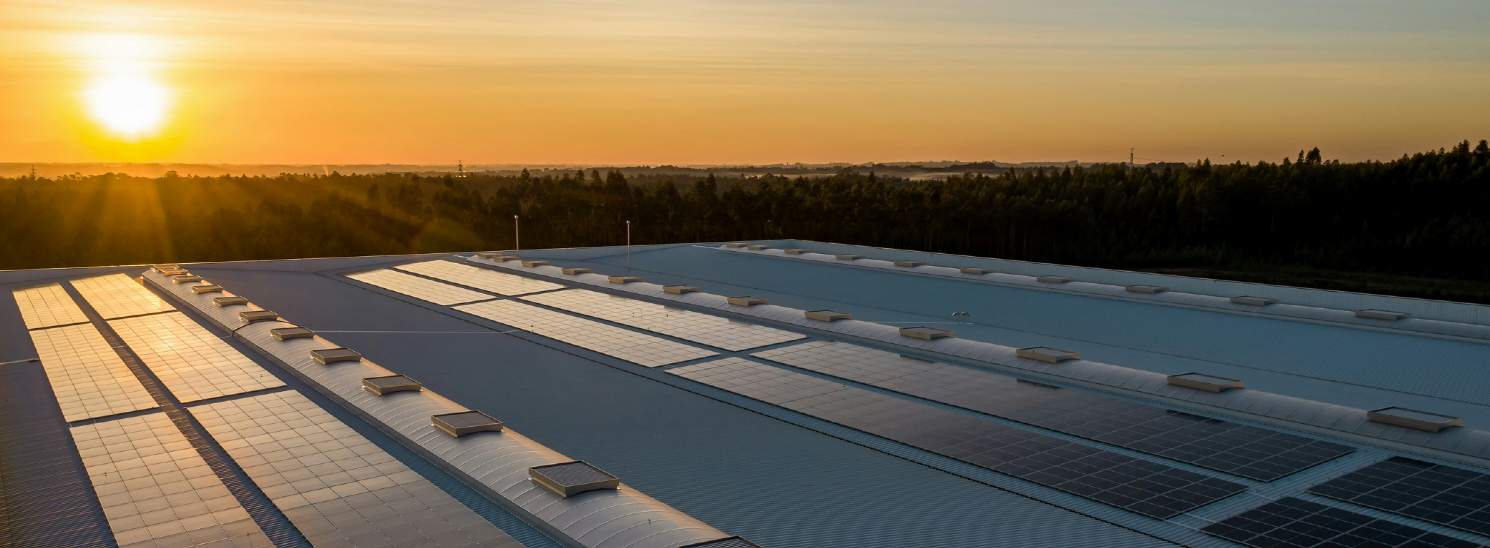Solar photovoltaics, commonly known as solar PV, are rooftop panels that capture sunlight and convert it into electricity, suitable for powering various buildings, whether residential or industrial. The technology is particularly popular amongst high energy commercial occupiers, due to its potential to enhance productivity, benefit the environment and foster innovation.
What benefits and considerations should be taken into account before installation?
Short term costs versus long term benefits:
Installing solar PV presents initial expense but long term benefits. In the short term, there’s a capital expenditure cost. However, this is dependent on the contractual agreement between the landlord and occupier and there are various options for sharing this cost. Furthermore, if a tenant has long lease terms, the long term gains are more significant in the form of financial savings, as occupiers become less reliant on traditional energy sources. Also, excess energy generated can be exported and sold back to the gird, potentially creating an additional revenue stream. Therefore, the length of a lease must be considered and an occupier should then weigh up if the benefits are worthwhile.
What should be front of mind for an occupier?
Occupiers should first approach their landlord and look at their lease agreement, whether it’s a Full Repairing and Insuring (FRI) or an Internal Repairing and Insuring (IRI) lease, which will determine the responsibilities for maintenance and repairs. It is also important to evaluate the age of the building and any recent roof refurbishments to ensure compatibility and structural suitability before solar installation.
What are the benefits to an occupier?
Installing solar PV provides numerous benefits to occupiers. Firstly, it provides access to green electricity directly onsite which in turn promotes sustainability efforts. By utilising solar energy, occupiers can significantly diminish their reliance on the grid, thereby cutting carbon emissions. Additionally, solar installations often lead to lower utility costs, offering long term saving as well as contributing towards net zero target strategy.
Last year, energy prices rose significantly in turn resulting in higher tariffs. As a result, our team saw a record number of solar enquiries. Despite these prices now starting to decrease, we are still seeing an increased number of enquiries, due to combination of financial savings with a contribution towards net zero targets. Installing solar PV is also attractive to landlords given the contribution towards green certifications, and value increase.
How long does it take to reap the rewards?
The timeframe for experiencing the rewards of installing solar PV varies. In times of high energy tariffs, such as last year, the payoff period could be as short as two to three years. However, with the current energy landscape, it typically ranges from five to seven years and the duration depends on the energy consumption profile, as high users can recoup their investment more swiftly.
Do battery storage systems have a role to play?
Battery storage systems can play a significant role, particularly for those with a high energy profile. Their versatility allows for various applications such as acting as ‘load shifting machines’, where they store excess solar electricity for use during peak demand periods. Additionally, they can also capitalise on off-peak electricity tariffs by charging overnight and discharging during peak hours, therefore optimising cost savings.
To find out more information about installing solar PV contact our specialist Savills Earth, Energy, Infrastructure and Renewables team.
Further information
Contact Silvia Manzoni or Thomas McMillan

.jpg)







.jpg)
.jpg)